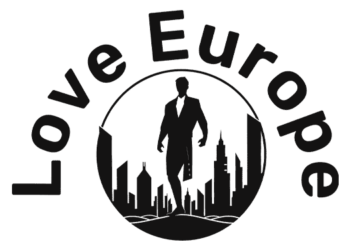That is why thrombectomy, which involves inserting a catheter into the femoral artery in the groin, then inserting a mechanical clot removal device that ensnares the clot within its struts, retrieving it into the catheter, is a “game changer,” he said. It can prevent death and severe disability in many patients.
Estimates vary regarding the proportion of people with a stroke who could benefit from thrombectomies, with most studies suggesting between 10% and 20%. In Ireland, which has what is considered a successful thrombectomy service, the figure is more like 10%. In 2022, 11% of patients with ischemic strokes in Germany underwent the procedure.
But in a recent report, the UK’s Stroke Association estimated that just 2.5% of stroke patients were offered this treatment in England by 2021. Several European countries, particularly in Eastern Europe, are understood to be treating even less.
Thrombectomy Centers
Given the evidence, countries throughout Europe have set up thrombectomy services, according to Professor Christian Taschner, general secretary of the European Society of Minimally Invasive Neurological Therapy (ESMINT), which, among other services, trains interventional neuroradiologists in Europe. By 2021, there were physicians certified to perform mechanical thrombectomy in at least 204 hospitals in Germany. “We are basically covering most of the country,” said Taschner, who performs the procedure at University Hospital Freiburg, Freiburg im Breisgau, Germany.
 Christian Taschner
Christian Taschner
Yet despite efforts from stroke doctors, nurses, and paramedics, not enough patients in Europe who require thrombectomies get them.
Ideally, a thrombectomy center has sufficient trained interventional neuroradiologists and anesthetist support to perform thrombectomies around the clock. In the United Kingdom, as in other European countries, patients are scanned at their primary stroke center (a local center that assesses patients and performs thrombolysis). If scans confirm they are eligible for a thrombectomy, an ambulance takes the patient to a central thrombectomy center.
After the procedure, teams consisting of stroke consultants like Evans, specialist stroke nurses, and other specialist health workers take over stroke care for the patient. “The ideal unit will work almost like a kind of Formula One pit stop, where you’re not losing time because time is brain,” Evans said. “If you don’t treat these big strokes, the brain will die quite quickly. We’re talking hours, and that’s why the time window where we want to treat people is as quickly as possible.”
In some countries, 24/7 services can be limited, according to clinicians. Others report shortages of trained interventional neuroradiologists, on-call anesthetists, ambulance capacity, or stroke beds. “It is not just one procedure; you need a multidisciplinary team that works together,” said Taschner. “You need an ambulance that doesn’t wait 20-30 minutes before it can unload its patient.”
Germany’s system, which is better resourced, is decentralized. This means that thrombectomies are not confined to a few dedicated centers. Different countries have been trying different approaches, Taschner said. “There is not one solution that works for all.”
When the Irish thrombectomy service, which is centralized, was established, there was no extra money and no edict from higher up. “We had a few early champions, myself included,” Thornton said. “We tried to develop and deliver the service with what we had already.”
The team began to provide 24-hour services for a few days per week, gradually increasing as more interventional neuroradiologists came on board. Today, ambulance crews wait with a patient at the local hospital while a rapid clinical assessment is done, ideally in 15 minutes, so they can take patients directly to the thrombectomy clinic, saving the 1.5 hours it takes to request a new ambulance crew after a scan.
If a primary stroke center is nearby, they may be advised to keep a patient bed available. Therefore, instead of admitting patients into the hospital where the procedure is performed, patients are returned to the primary center. “Often a doctor and nurse from the other hospital will stay and return with the patient,” Thornton said. Because thrombectomies in Ireland are performed under local, rather than general, anesthesia, there is less of a need for on-call anesthetists. If EVT is performed under general anesthetic and there are not enough on-call anesthetists, as is the case in other countries, 24/7 services may not be offered.
Despite these advances, more needs to be done, and efforts are underway, experts said. ESMINT trains more interventional neuroradiologists, especially from Eastern Europe, every year. The United Kingdom is bringing more 24/7 services on stream. France is overhauling its thrombectomy service provision because ambulance transfer times to some existing thrombectomy services can be over 6 hours in rural areas.
But if paramedics could identify thrombectomy candidates, they could take patients directly to thrombectomy centers. In the United Kingdom, there are now ambulances with crews and equipment to enable patients to have a CT scan and thrombolysis in the vehicle, as well as those with crews able to carry out video triage with specialists in hospitals. Evans said the United Kingdom is also considering whether to train specialists, such as cardiologists or neurologists, to perform these procedures when there are not enough interventional neuroradiologists.
Taschner reported no relevant financial relationships. Evans received funding from the Stroke Association in the United Kingdom, and Thornton is associated with a new thrombectomy device manufacturer.
Tatum Anderson is a global health and medical journalist. For over 20 years, she has placed articles in publications from the Bulletin of the World Health Organization to The Lancet, BMJ, BBC News, and The Economist. She had no disclosures.
Source link : http://www.bing.com/news/apiclick.aspx?ref=FexRss&aid=&tid=678fe175e3c54892abf7c2c8b6334852&url=https%3A%2F%2Fwww.medscape.com%2Fviewarticle%2Fevt-effective-use-acute-stroke-still-low-europe-2025a10001cr&c=17543802795656999904&mkt=en-us
Author :
Publish date : 2025-01-20 23:36:00
Copyright for syndicated content belongs to the linked Source.



